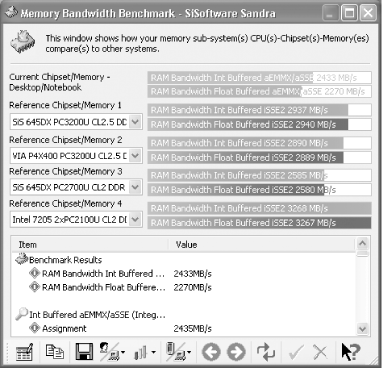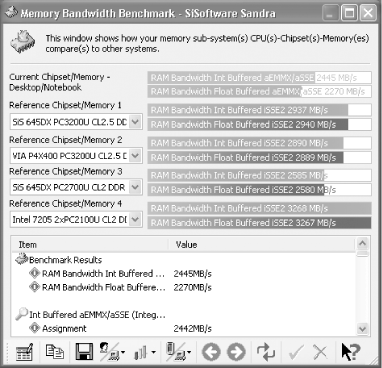Once in a while someone digs deep enough into an issue or exploits an opportunity and simply creates a single program or driver to take the guesswork out of fiddling with bits, bytes, microseconds, and clock rates.
Many Via chipset implementations do not have memory interleave enabled, which hinders performance. This feature is also not normally available in BIOS setup programs, and the only way to turn this feature on to gain a performance boost is to use a driver specifically written to enable it.
To find out if you have a Via chipset that could benefit from enabling memory interleave, visit http://www.cpuid.com/cpuz.php to download their CPU-Z program.
George Breese's Memory Interleave Enabler for Via chipsets (http://www.georgebreese.com/sites/georgebreese_com/net/software/) is a driver you install in Windows to do the work of turning on and tweaking the memory-interleave values for your chipset. Figure 4-6 shows SiSoftware's Sandra Memory Bandwidth Benchmark before installing Memory Interleave Enabler.
After installing Memory Interleave Enabler, you will notice at least a slight improvement in memory performance, as indicated in Figure 4-7. Any performance improvement, no matter how you get it, can be good for the overall system.
If you add up enough 0.5% improvements with subtle hacks, you'll be up to an additional 5-10% in no time. The documentation at George Breese's web site, http://www.georgebreese.com/net/software/readmes/venabler_v015_readme.htm, explains the details.
Get PC Hacks now with the O’Reilly learning platform.
O’Reilly members experience books, live events, courses curated by job role, and more from O’Reilly and nearly 200 top publishers.



